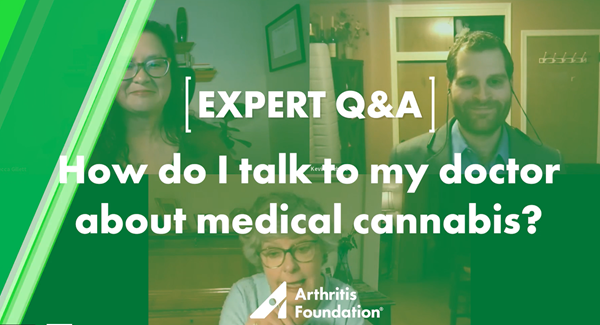Talking About Arthritis Pain
When you live with chronic pain, the only one who can know how much it hurts is you. Pain can be hard to describe because it’s both invisible and personal. If you can’t put into words how much pain you’re in or how it affects your life, your doctor can’t prescribe the right treatment for you.
Use this guide to help you talk to your doctor about your arthritis pain so you can get the relief you need.
What Does the Pain Feel Like?
Be as specific as possible about how your pain feels to help your doctor figure out what’s wrong.
Here are a few words you can use to describe the way your pain feels, and how your doctor might interpret them:
-
Aching, dull: muscle strains, arthritis pain
-
Shooting, electric, tingling, burning, pins-and-needles: nerve pain
-
Sharp, stabbing: injuries such as a broken bone, muscle or ligament tear, or penetrating wound
-
Throbbing: headache, abscess, gout
-
Tightness: muscle spasm
Where Do You Have Pain?
Describe exactly where you hurt and how that that may or may not change to your doctor.
Here are a few examples:
-
Deep in your shoulder joint or in the muscles near the surface.
-
Under the kneecap or in the back of the knee.
-
The outside of your hip or in your groin.
-
Is the pain in only one spot, or does it travel?
-
Does the pain remain steady, come and go, or only flare up when you move in a certain way?
How Much Does it Hurt?
Explain the intensity of your pain to your doctor. That’s where the pain scale comes in. Your doctor will ask you to “rate” your pain on a scale of 0 to 10 – where 0 is pain-free and 10 is unimaginable pain. The doctor can use your score to help determine how much and what type of pain medicine you need.
How Does the Pain Affect Your Life?
Tell your doctor which activities you’ve had to adjust, and which ones you now avoid entirely because of your pain. Just as important as the level of pain you feel is the impact it has on your life.
“Some patients come in the door with an eight on the pain scale, and they’re functional. Other patients walk in with a three and they’re disabled,” says Thelma B. Wright, MD, medical director of the Pain Management Center at the University of Maryland Rehabilitation and Orthopedics Institute in Baltimore. “Function is huge.”
Examples of life changes:
-
Have you been skipping your morning jog because of the pain?
-
Are you missing work?
-
Can you barely get out of bed in the morning?
-
Does the pain leave you so drained and depressed that you don’t want to be around people?
When Do You Hurt?
Try keeping a journal to help you track when in the day your pain is at its worst. The timing of pain can help your doctor fine-tune your treatment. “If I notice that a patient has higher pain scores in the morning versus in the evening, I may tailor my medication management to that,” Dr. Wright says.
What Helps/Worsens Your Pain?
Make note in your journal what you’ve tried to relieve the pain (rest, ice, heat, over-the-counter pain medicine). Did they ease the pain, have no effect or make it more intense?
With a good description of your pain, your doctor will have a better chance of getting you the relief you need. But even when your doctor knows the cause of your pain, treatment might not be a quick fix. “It’s a trial and error process,” says Dr. Wright. “You might go through several medications before you get the best combination.”
Stay in the Know. Live in the Yes.
Get involved with the arthritis community. Tell us a little about yourself and, based on your interests, you’ll receive emails packed with the latest information and resources to live your best life and connect with others.


